The inedible Bear Lentinellus gets a lot of attention because, from a quick glance, it looks quite like an oyster mushroom. Many a hopeful forager has happened upon this species with big expectations. Bear lentinellus (Lentinellus ursinus) is a neat mushroom, though, on its own, even if it’s not a prized edible like its lookalike oyster brethren.
- Scientific Name: Lentinellus ursinus
- Common Names: Bear Lentinellus, Bear Lentinus, Bear Cockleshell
- Habitat: Decaying hardwood
- Edibility: Inedible, non-toxic
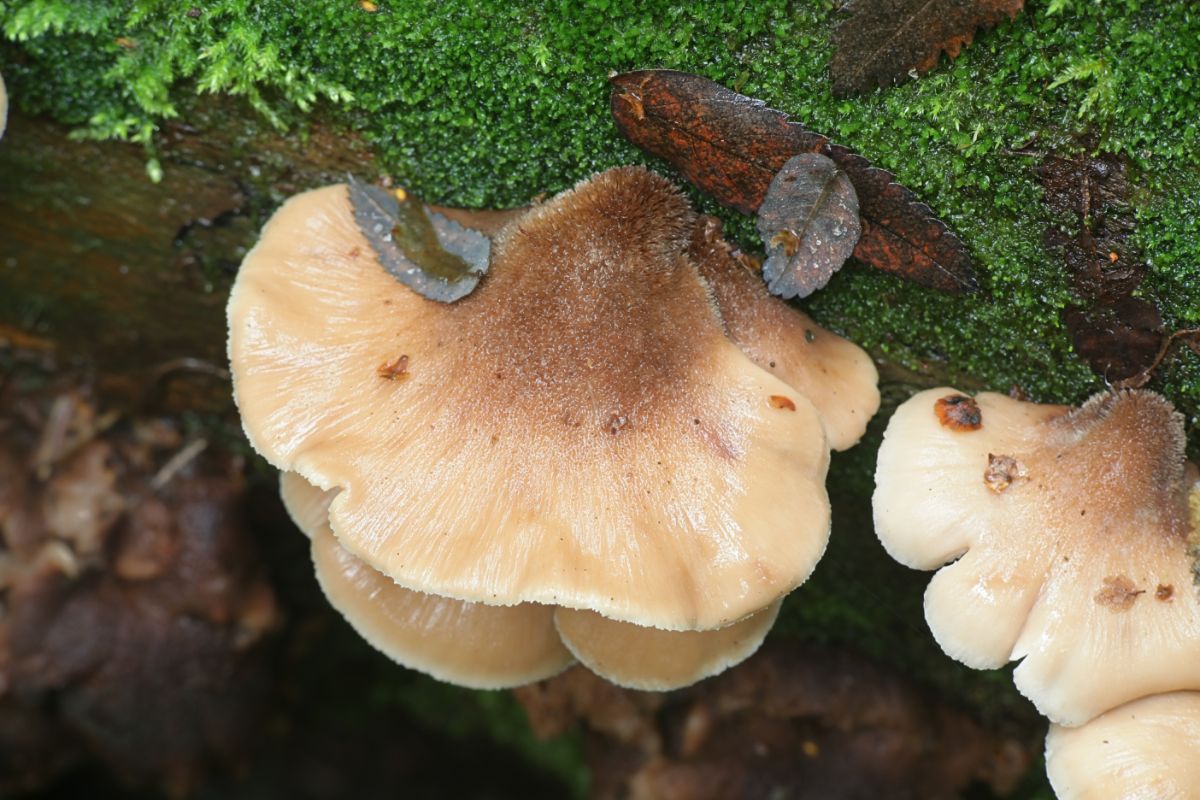
Jump to:
All About Bear Lentinellus
Bear lentinellus, scientifically known as Lentinellus ursinus, is a species of wood rot fungi defined by their jagged, saw-like gills. Its name stems from the Latin word “lentus,” meaning pliable and tenacious, referring to its chewy texture, and “ursus,” meaning bear, due to its hairy brown cap. Combined together, this mushroom’s Latin name, Lentinellus ursinus, translates to “Bear Lentinellus.”
This species has been through a lot of name changes. You may still see it listed as Lentinus ursinus or called Bear Lentinus. As it turns out, Lentinus and Lentinellus, despite their similar names, are not that closely related.
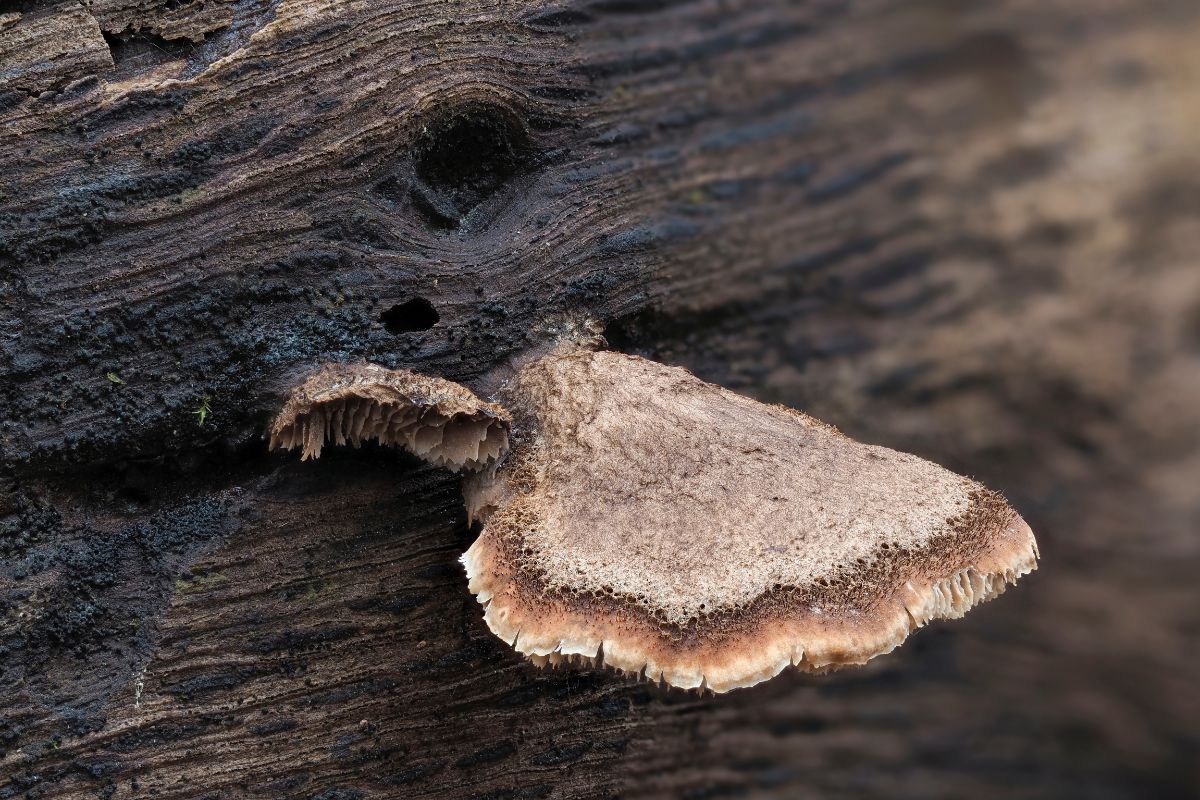
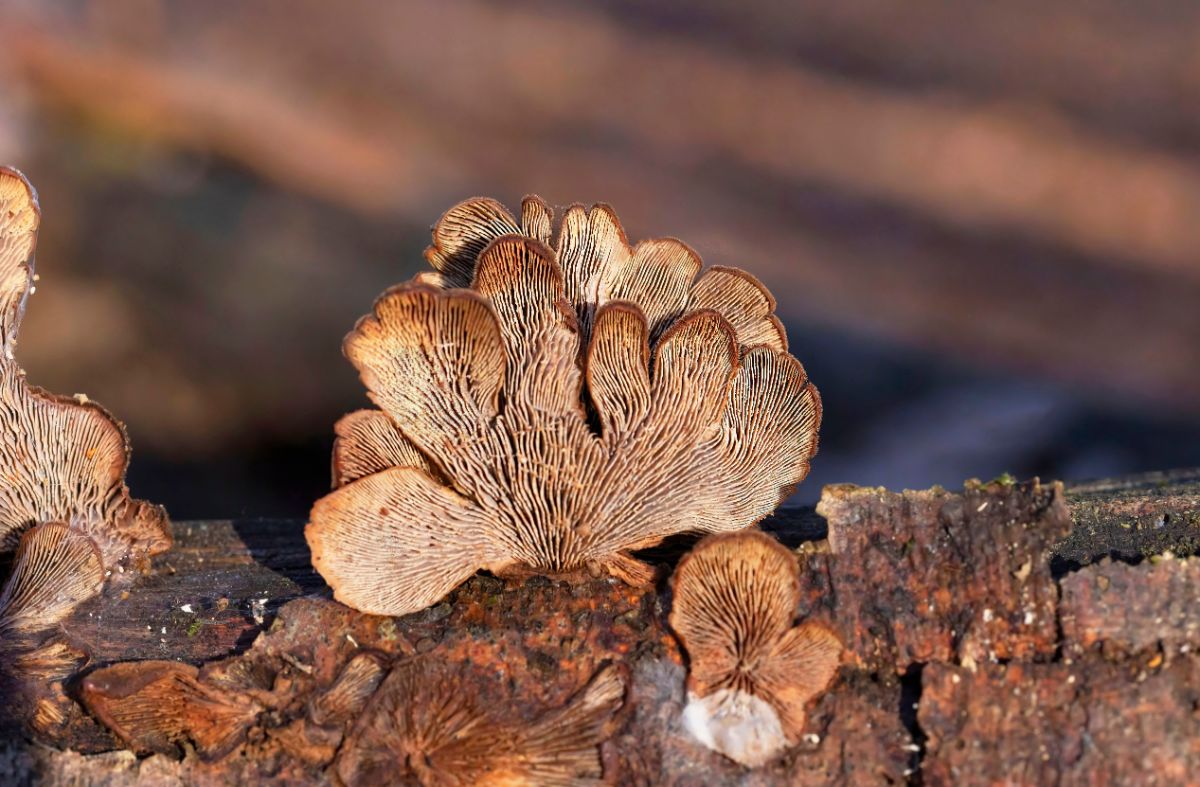
Bear Lentinellus Identification Guide
Season
Late summer through fall and into mid-winter in milder climates.
Habitat
The bear lentinellus grows on hardwood in groups or overlapping clusters, forming shelf-like structures on decaying wood. Rarely, it may also appear on conifer wood.
This fungus is widely distributed throughout North America.
Identification
Cap
The cap of the bear lentinellus is semicircular or kidney-shaped and measures between 1-4 inches wide. With age, it becomes depressed in the center near the base. The edges of the mushroom are rolled under and generally remain that way, even as it matures. The caps often develop short lobes, especially as they get large.
It is cinnamon or reddish-brown, with a paler beige color towards the edges. The surface of the cap is covered with tiny dark brown hairs, which are mainly concentrated towards the center. It looks like the cap is covered with fine velvet. The center is often dark and hairy, while the edges are smooth and pale.
The hairness of this mushroom seems to vary quite a bit. Some young specimens display very little hair or darker central coloring. Instead, the entire cap is smoothish and beige. This is when they are most confused with oyster mushrooms. Even if the bear lentinellus has dark hairs on the cap, they may disappear or wash off to give a smoother appearance. Sometimes, very
The caps often grow in overlapping clusters.
Gills
The gills are white to pinkish-brown and cover the entire underside to where the mushroom attaches to the wood. They are close together and coarsely serrated with irregularly torn edges – this is a key identifying factor.
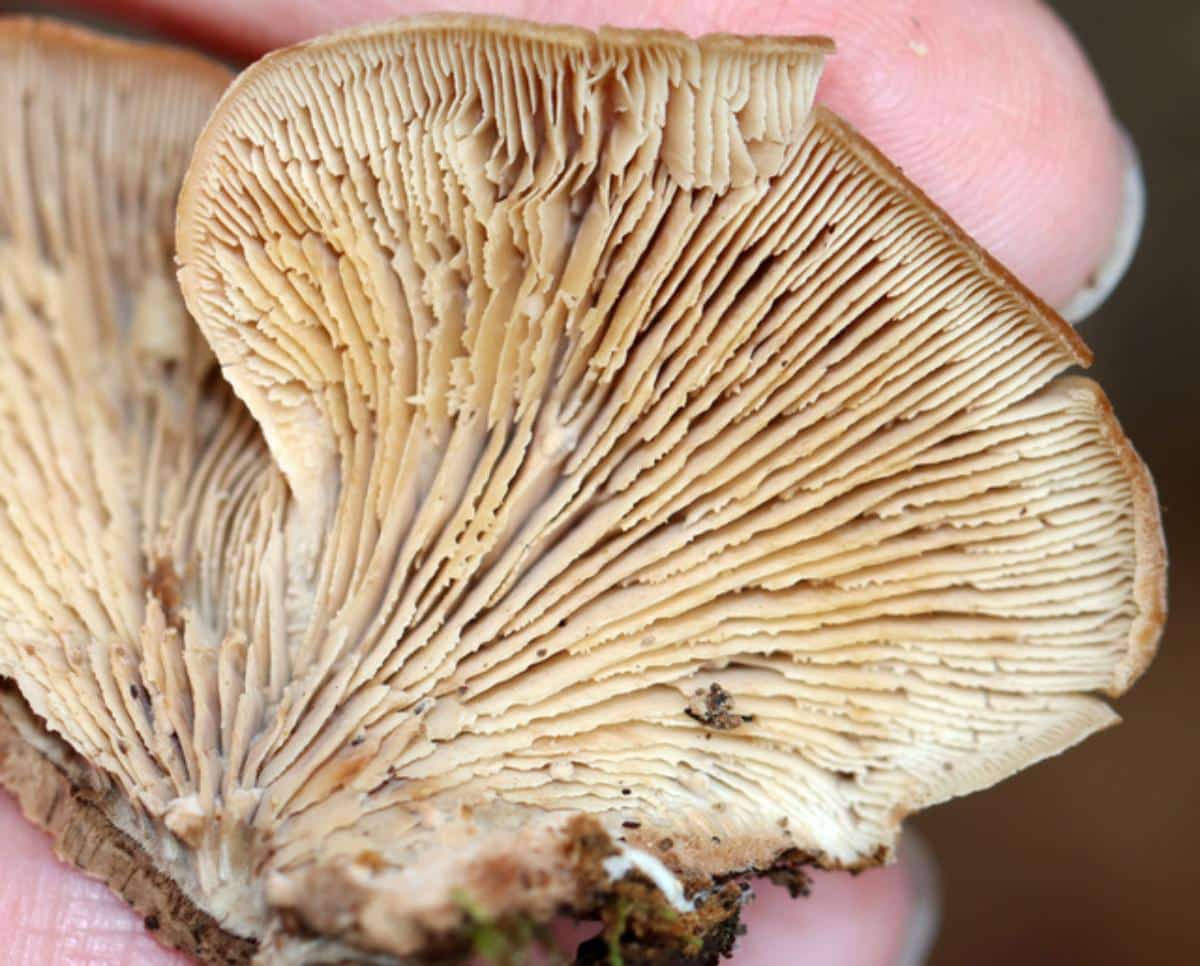
Stem
The bear lentinellus does not have a stem. Instead, it grows in overlapping shelves directly attached to the decaying wood.
Flesh
The flesh of the bear lentinellus is pale in color. It has a strong acrid, or peppery taste.
Odor
The bear lentinellus does not have a distinctive odor, or it might smell slightly spicy.
Spore Print
The spore print of the bear lentinellus is creamy white.
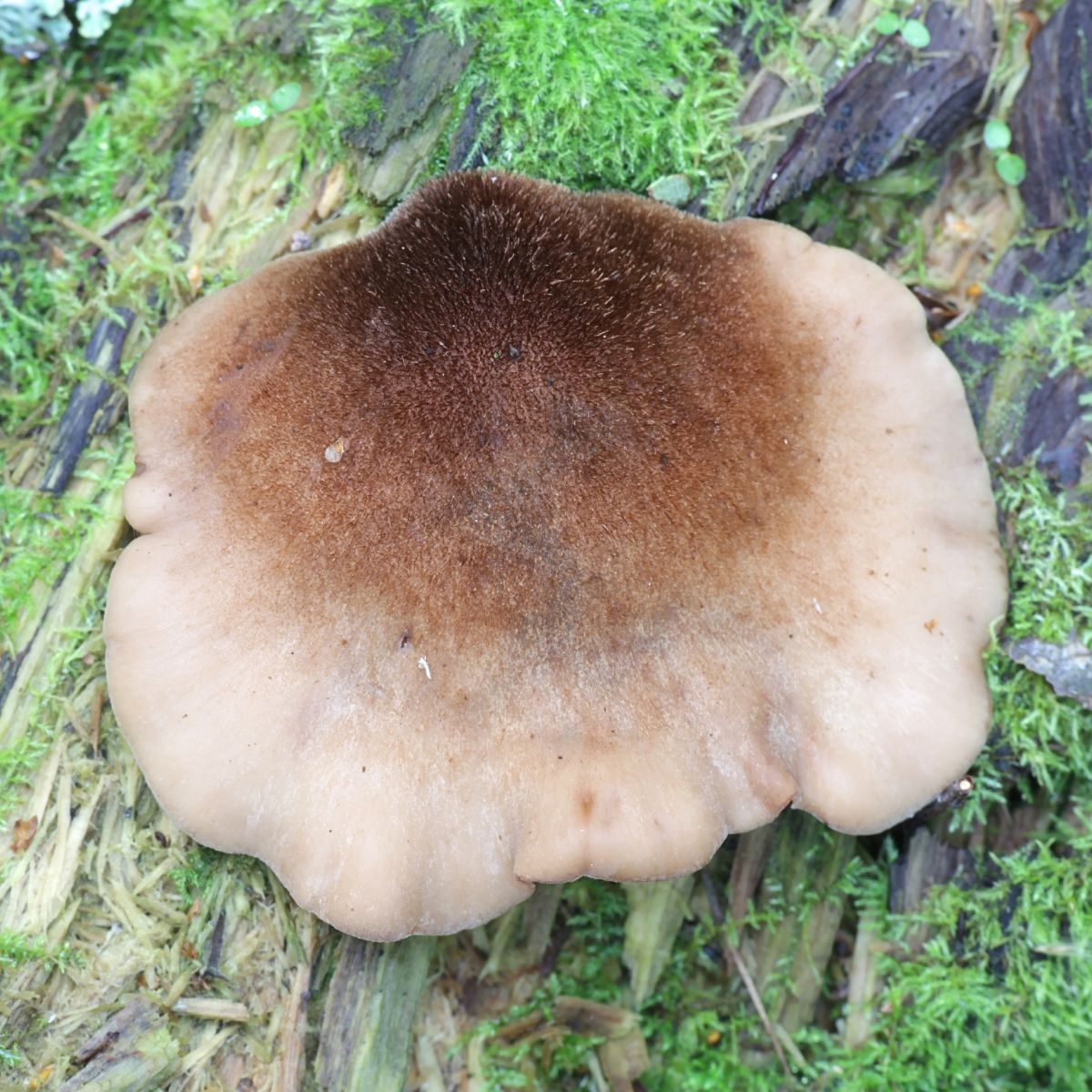
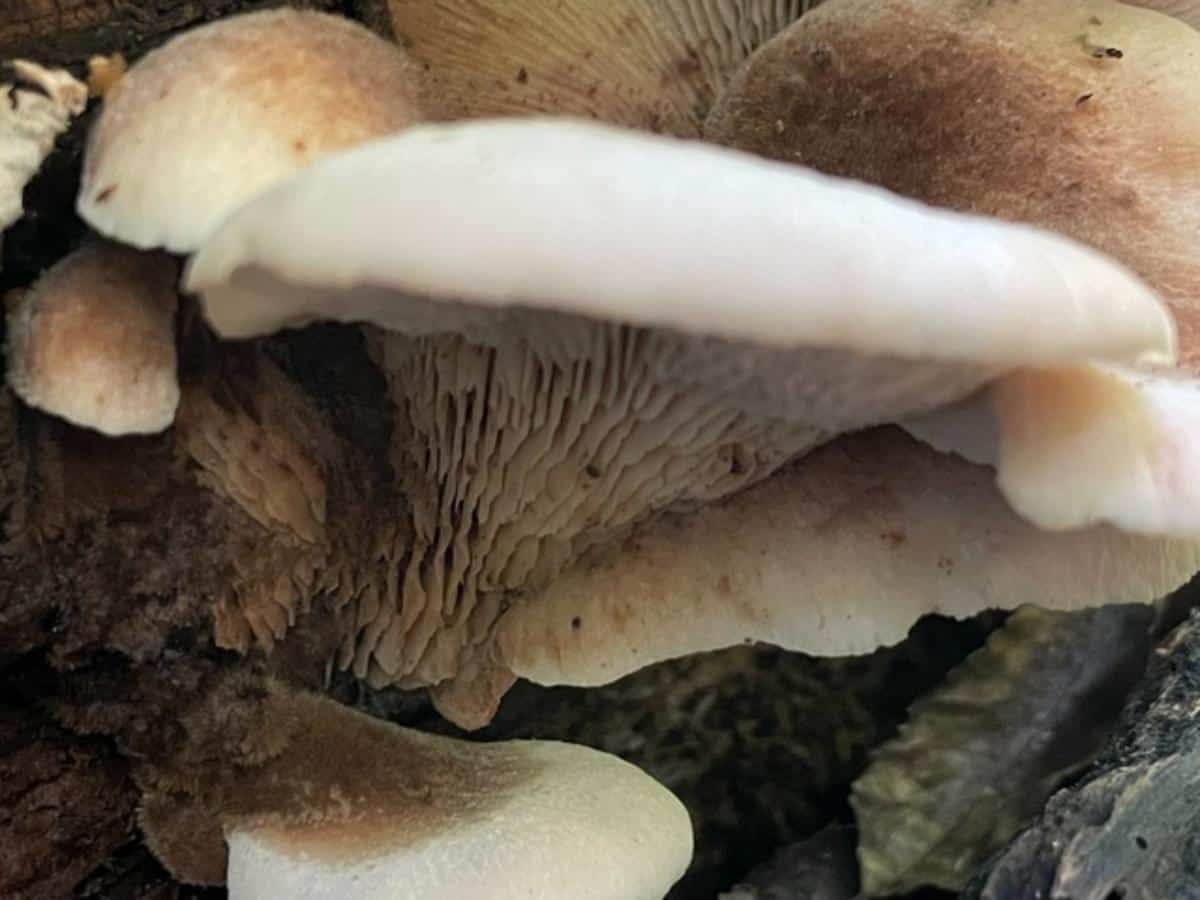
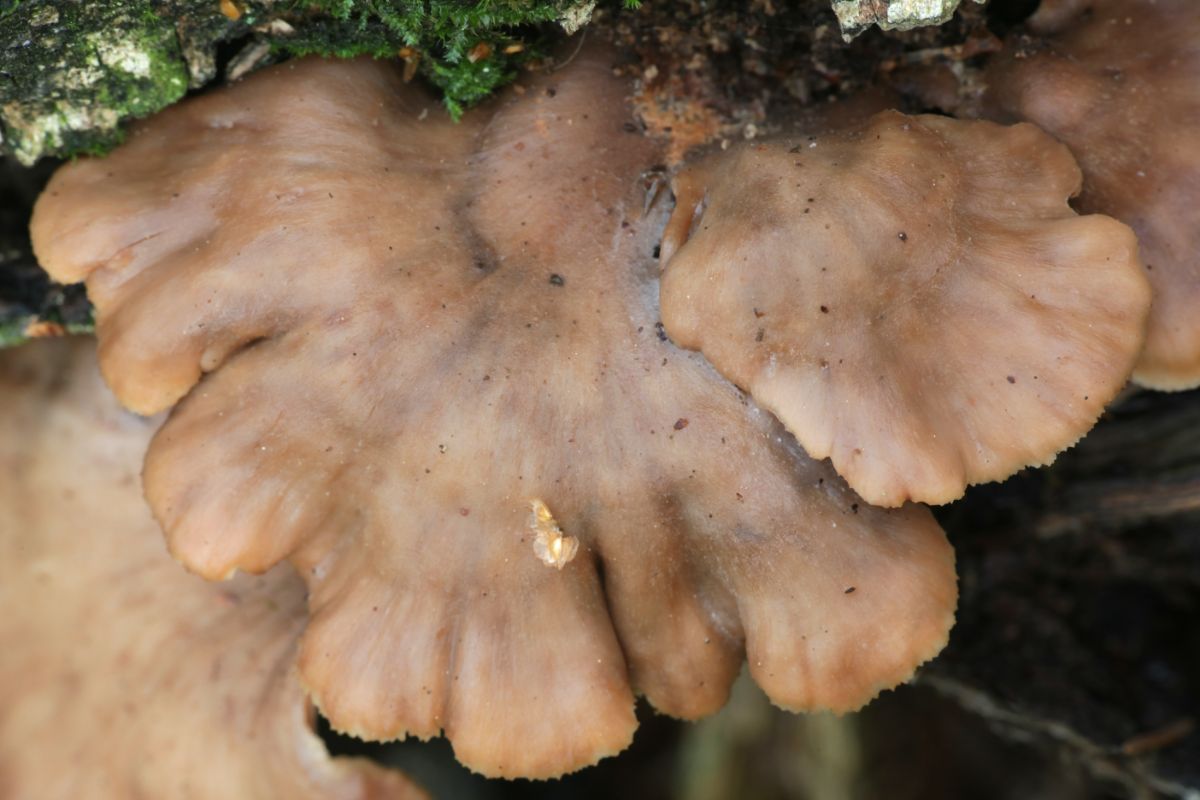
Bear Lentinellus Lookalikes
Lentinellus vulpinus (Fox Lentinellus)
These two species are complicated to tell apart. One of the key differences between the bear lentinellus and the Fox Lentinellus is the presence of a stem. While the bear lentinellus lacks a stem, the Fox Lentinellus has a short, one-centimeter stem. However, that tiny stem is often challenging to point out. Field guides often mention differences in cap surface color and fuzz, but these features can overlap, leading to confusion. Microscopic analysis is often necessary to distinguish between the two species effectively.
Lentinellus montanus
This close relation to the bear lentinellus is also difficult to differentiate. The primary difference is that this species grows on conifers, especially lodgepole pines and red fir. It also appears in spring, not fall or winter. This species is also inedible due to its peppery taste.
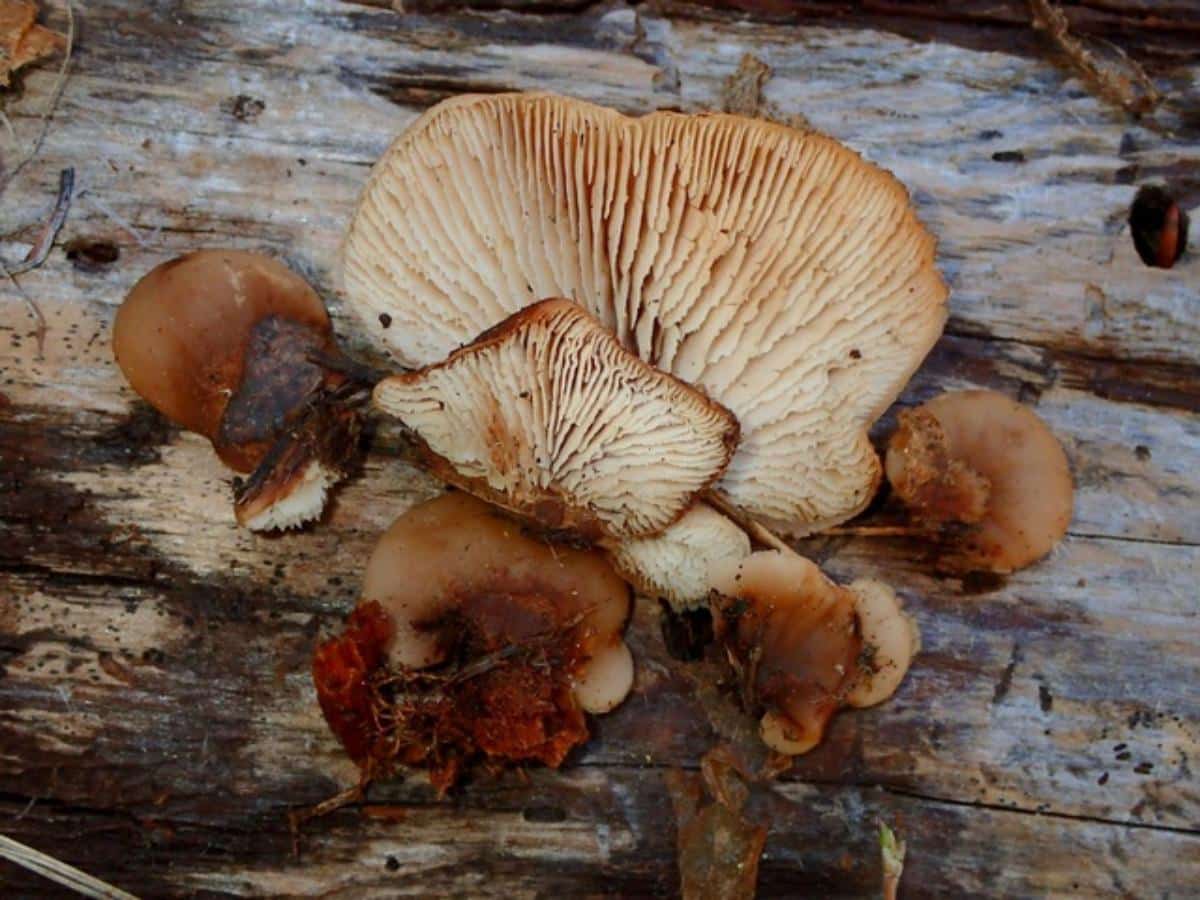
Oyster Mushrooms
Oyster mushrooms grow in similar shape and fashion on dead hardwood trees, which is where much of the confusion arises. Both are semicircular in appearance, beige or bland colored, and have gills covering most of the underside.
There are several key differences, though, that are easy to figure out once you know what to look at.
Oyster mushrooms:
- do not have fuzzy caps
- have stems, even if short ones
- are not dark brown in the center of the cap
- do not have irregular serrated gills
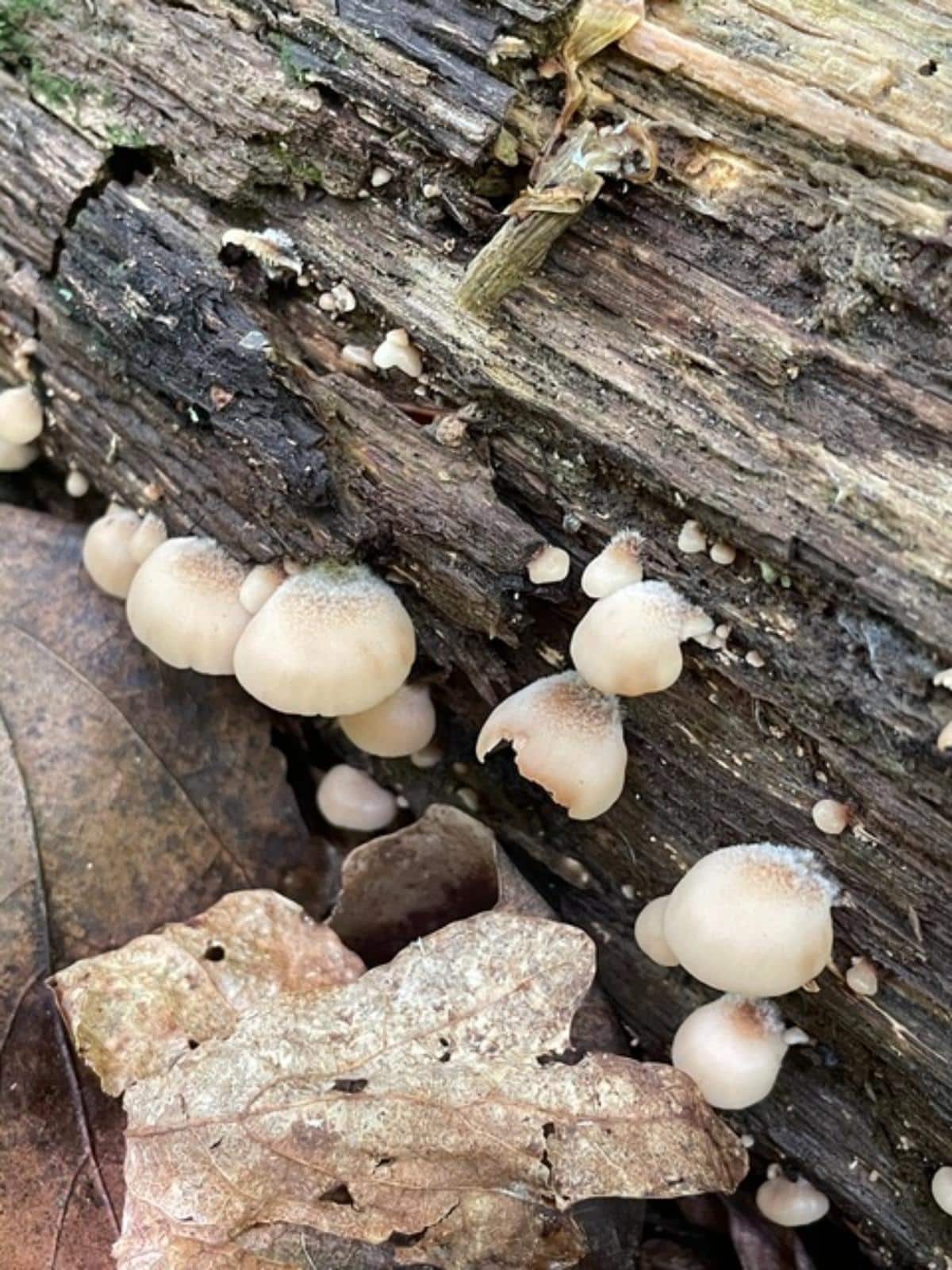
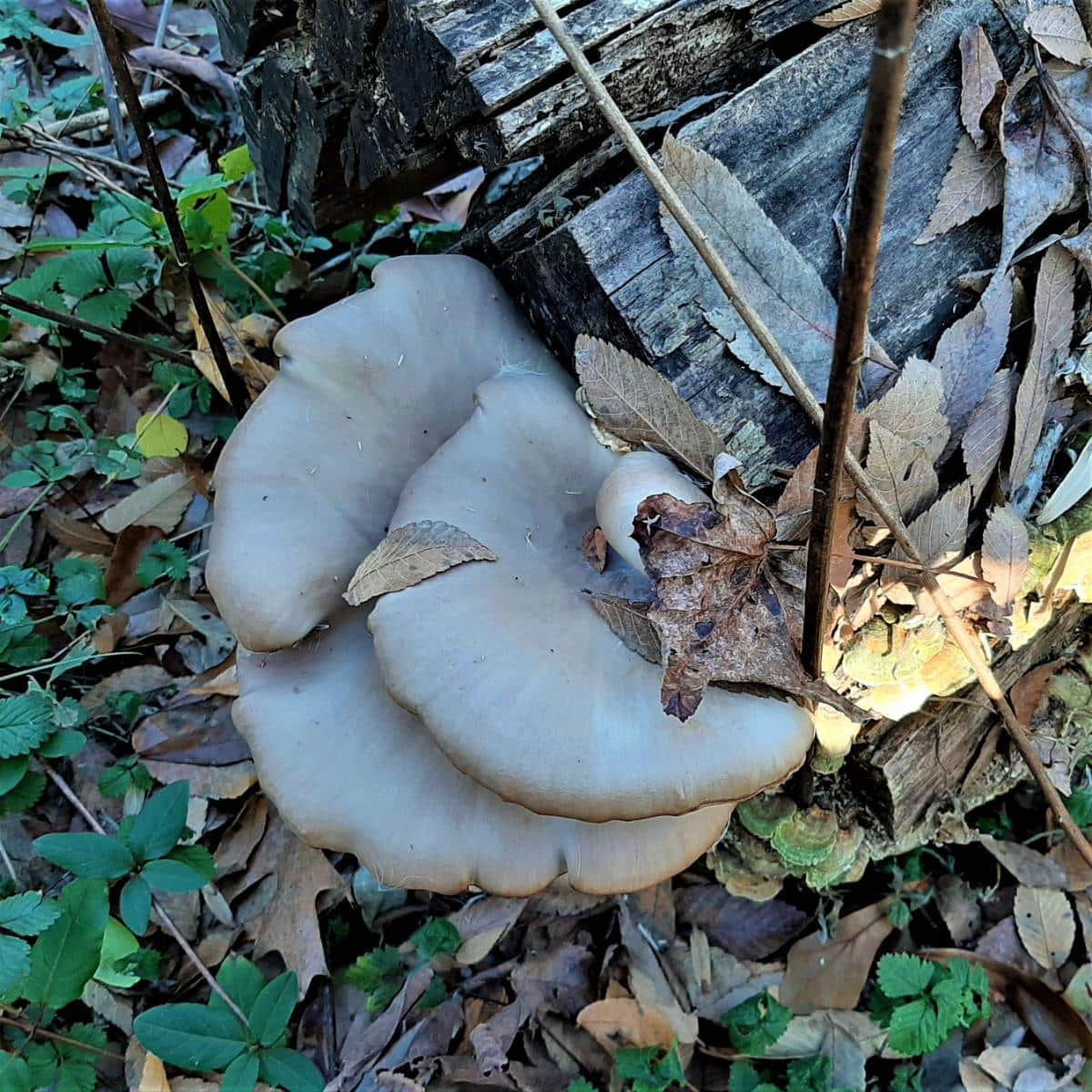
Bear Lentinellus Edibility
Bear lentinellus is inedible. It has an extremely acrid and peppery flavor. If you’re ever wondering if you’ve found oysters or bears, just put a tiny bit on the tip of your tongue. The bear will reveal itself quickly with a sharp, burning taste. Better to experience it a little bit than to cook up a pan of “thought these were oysters,” and take a big bite.
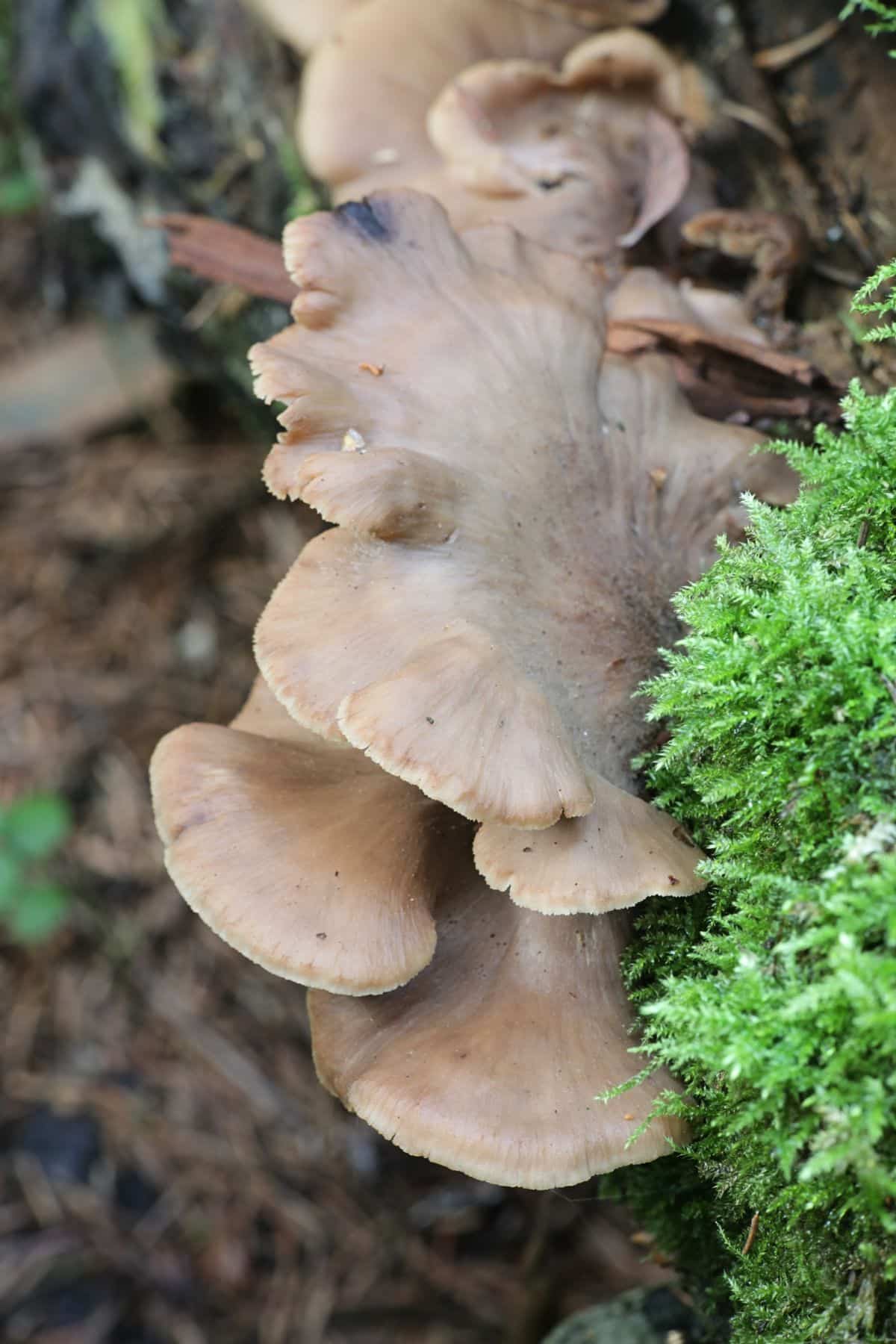
Common Questions About Bear Lentinellus
Is bear lentinellus ursinus poisonous?
No, it is not poisonous. It is not edible, either, though, due to its extremely spicy taste






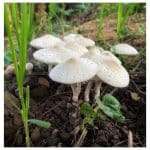
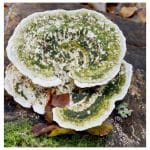
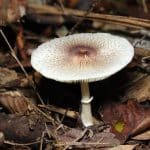
Leave a Reply